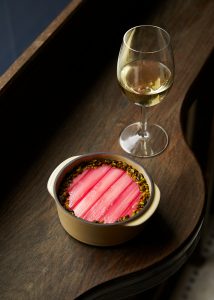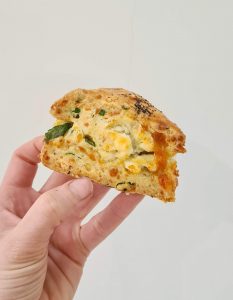Nicola Leigh Stewart visits the Hôtel de Paris Monte-Carlo and its historic independent wine cellar

“This is where we offer dreams,” said François Blanc, of the Société des Bains de Mer (SBM), the company founded in 1863 at the behest of Charles III, Prince of Monaco, and entrusted to his care in order to revive the principality’s flagging fortunes. Under SBM, Blanc imagined the modern-day Monte Carlo; a playground of decadent hotels, restaurants and of course, a now world-famous casino. But whilst it was the man dubbed the “Magician of Monte Carlo” who created all that we can see, it was his wife Marie who was the force behind what his hidden below the principality’s first grand hotel: the Hôtel de Paris Monte-Carlo wine cellar.
When the Hôtel de Paris Monte-Carlo opened its doors in 1864 it was one of Blanc’s Monégasque masterpieces, its design based on Le Grand Hôtel in Paris, which had opened just two years earlier. In a role that was unusual for a woman of her day it was Marie who oversaw the hotel’s interiors, which offered enough pomp and splendour to entice everyone from Kings and Princes to Heads of State. It was also Marie, not François, who realised that to meet the demands of such a clientele the Hôtel de Paris must offer wines which no other hotel or resort has, and even now, no other hotel or resort has such a cellar.
“She was a visionary,” Gennaro Iorio tells me, the wine cellar master for SBM since 1993 and today, my personal tour guide to the maze of underground rooms. We’re stood in the entrance of the Cave Centrale, or as it’s more commonly known, the Cave de l’Hôtel de Paris, which lies ten metres underground, takes up 1500m2 of space, and houses 1.5 kilometres of wine racks; it’s so large that it spreads out underneath the Hôtel Hermitage next door. After observing wine cellars all across Europe Marie decided to base the cellar on the Bordeaux model, and upon her return to Monte Carlo she ordered that a series of small caves should be dug into the white rock that lay underground. This rock would naturally provide the optimum environment for storing wine; a cool 13°C and 14°C stable temperature, a constant 80 percent humidity, and a dark, sheltered space to protect the precious bottles from noise and vibrations. The effort took 18 months and nearly 100 skilled workers, not to mention a vast chunk of Marie’s own personal fortune, but the investment would pay off. At the time, domaines (vineyards) produced wine, but they didn’t bottle it. This job was overseen by a négociant, who would purchase the wine from the vineyards, bottle it, and sell it on. Marie not only had the idea of building a cellar to store fine wine but also for the hotel to act as a négociant, and so barrels of wine began to be delivered to Monte Carlo by way of the sea from Bordeaux (which at the time was the only classified wine region) in order to be bottled before being sold in the hotel’s bar and restaurants.

By the late 1930s, the Bordeaux domaines had started to take on the role of négociant themselves and a new wine label appeared, Mise en Bouteille au Château, literally “Bottled at the Castle” in English. When in the 1960s everyone else followed suit, the wine masters made the savvy decision to switch from bottling to ageing, first in barrels, then in the bottles themselves. The cellar is now home to 350,000 bottles and 4,200 different varieties of wine, making it the most important independent hotel wine cellar in the world. Although all every French wine region is represented, as in the days of Marie, Blanc Bordeaux is still king, with 50 percent of the wine stored in the cellar coming from France’s most famous vineyards. How this translates in the restaurants though is slightly different. Of the 300,000 bottles that leave the cellar every year, a third of what is sold is champagne, with 900 to 1000 bottles popped daily at properties in the SMB group, the largest amount sold anywhere in such a small area. Wines from nearby Provence make up another third of sales, and the rest is a mix of bottles from France’s other major wine regions, such as Bourgogne and the Rhône Valley. “In France, we have a notion of terroir and of history,” Gennaro enthuses. “The world of wine in France is magic. It’s unique.” The few wines that are imported are intended mainly for Buddha Bar and the restaurants COYA and ÔMER, where they suit the more international menus. As there are no vineyards in Monaco none of the wines are from the principality, but wines that would count as “local” are those from the nearby region of Bellet, situated just outside Nice and around 30km from Monte Carlo. The cellar also holds bottles of Armagnac and Cognac (which to continue the tradition is still bottled here in the cellar, after ageing in two centuries-old casks), and I’m surprised to find out, a selection of English liquors chosen by Gennaro’s predecessor Etienne on his trips across the Channel.

As we pass under the cellar’s archways and past endless rows of bottom-facing bottles, Gennaro tells me that although La Tour d’Argent in Paris is also known for its vast cellar, which holds around 320,000 bottles (the oldest of which is a Château Citran 1858, a rival to the Hôtel de Paris’ 1850 Château Bel Air Marquis d’Aligre à Margaux) a big difference between the two caves is that La Tour d’Argent sells its wine to clients, and the Hôtel de Paris does not. The wines stored in the Cave Centrale can only be drunk in the principality, making the experience far more exclusive. Having said that, they’re not hard to get hold of once you are here; the cellar supplies 40 addresses in Monaco, including 22 restaurants with a total of ten Michelin stars. Seven stars can be found within the SBM group (one star at Le Vistamar, Le Grill, Blue Bay, and Elsa and three at Le Louis XV – Alain Ducasse) whilst the rest belong to Yoshi (one Michelin star) and Joël Robuchon (two Michelin stars), both at the Hotel Métropole Monte-Carlo. The Hôtel de Paris also enjoys a long standing relationship with the Grimaldis, who use the cellar as their own wine supplier and over the years have visited both above and below ground; former wine master Etienne was close to Prince Rainier III during his 50-year tenure and for Princess Grace, whom I’m told enjoyed a glass of Château Haut-Brion, the cellar was a favourite venue for celebrating family events.
In 2013, when SBM celebrated its 150th anniversary, the hotel decided to start opening its usually firmly closed cellar doors to select clients who, like Princess Grace, are looking to host a more intimate dinner party. The cellar’s low-ceilinged and rather humble dining room, where the only clue of regal connections is the framed memories of the royal family hanging on each wall, can hold up to 40 guests and hosts around 50 dinners every year. The privilege of dining here does come on one condition though: the wine must be the most important part of the meal. Unlike in the restaurants above ground, here the sommelier has the chance to choose the wine menu first, and the chef must design his around what will be in the glass. Of course guests can expect to be served exceptional wines (one bottle Gennaro show offs during my tour is Pétrus 2000) but the selection can be adapted to fit various budgets and in fact, the wines won’t necessarily be the cellar’s most expensive. They will, however, be something special, sometimes something rare, and for guests who value exclusivity, perhaps something that isn’t even sold in the restaurants.

In one of our final stops Gennaro shows me the Chapel, one of most private rooms in the cellar. This compact and appropriately named room is where you can find the cellar’s most prized vintages, from bottles of Petrus 1945 to Châteaux d’Yquem, the oldest of which dates back to 1890. It’s also where Princess Grace and Prince Rainier III chose to celebrate their 20th wedding anniversary in 1976, and before that, where Etienne hid his most precious wines from the Nazis during WWII, along with the gold, silver, and jewels that clients had entrusted to the hotel for safekeeping, by placing seven rows of wine bottles outside the door as a disguise. These days, and without any bottles as a ruse, Gennaro also uses it to secret away the wines that he doesn’t want to sell, those which are bought en primeur. These wines are purchased directly from the vineyards when they are still ageing in the barrel and it can be years before they arrive at the hotel, where they’ll continue to mature, this time in the bottle, in the cellar’s perfect conditions. Gennaro tells me that some wines have been laying here, patiently, for more 30 years, adding that, “To make a great wine, you need time”. The SBM group is one of very few hotel groups to purchase en primeur wines, and it’s another factor that sets the cave apart from other hotel cellars. Although it can be a risky business, for example, flavours can change due to variables such as the weather, it can also lead to wines of exceptional quality, and increased exclusivity. As Gennaro obviously cannot open these bottles to check if the investment was worth it, he explains that the SBM’s Tasting Committee, comprised of sommeliers from each hotel in the group, open something similar – and less expensive – during their weekly Friday meetings to gauge how the wine will age. I ponder how, even after all his time here, the cellar still holds wines that Gennaro might never have the chance to taste, or to enjoy, but it’s not the way he sees it. “We never stop learning, and I continue because I’m curious, curious to discover more,” he tells me. “It’s a job where you have to preserve something historical. You’re building something for the company. You’re building a future.”




